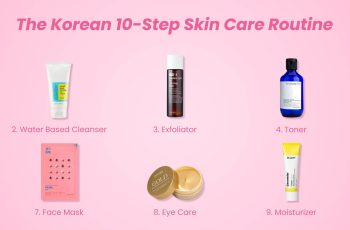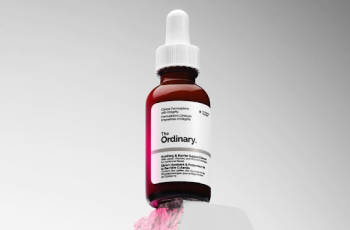
How to Tell if Your Skin’s Dehydrated (And What to Do About It)
Dehydration is a common issue many of us experience, often manifesting through symptoms like fatigue, headaches, dizziness, and muscle cramps. While we all recognize these signs, recognizing dehydrated skin is not always as straightforward. Skin dehydration can be easy to overlook since its symptoms share many similarities with dry skin. However, while the terms “dry” and “dehydrated” are frequently used interchangeably, they refer to distinct skin conditions, each with its unique causes and treatments.
In this guide, we delve deeper into what dehydrated skin really means, how it differs from dry skin, the telltale signs to watch for, and most importantly, what steps you can take to address and prevent it. With insights from dermatologists Gloria Lin, MD, and Melanie Palm, MD, we will help you understand everything you need to know to keep your skin hydrated and healthy.
What Is Dehydrated Skin?
At its core, “dehydrated” skin refers to a lack of water in the skin, as opposed to dry skin, which is typically caused by a deficiency of oils or lipids. Dehydration happens when the body loses more water than it takes in, leading to a shortage of moisture in the skin and other parts of the body. The body constantly loses water throughout the day through various natural processes like breathing, sweating, urinating, and even through the moisture evaporation of the skin. When these water losses aren’t replenished through proper hydration, the skin begins to show signs of dehydration.
Several factors can contribute to dehydrated skin, and they are more common than you might think:
Not Drinking Enough Water: One of the most obvious causes of dehydrated skin is insufficient water intake. Your body relies on daily hydration to maintain moisture levels in the skin, and when that balance is disrupted, dehydration sets in. People who fail to drink enough water throughout the day are at a higher risk for experiencing dehydrated skin.
Not Moisturizing Properly: While drinking water is essential, hydration on the inside isn’t always enough. For individuals with a compromised skin barrier, external moisture in the form of a good moisturizer is essential. Without adequate moisturizing, water can easily evaporate from the skin’s surface, contributing to dehydration.
Hot and Dry Climates: Environmental factors also play a significant role in the dehydration of your skin. People living in hot, arid environments or even in regions with harsh winters tend to lose more moisture from their skin due to dry air. Indoor heating in the winter can cause moisture to evaporate from the skin’s surface, leading to increased dehydration.
Hot Showers and Harsh Skin Products: Frequently taking hot showers or baths, using strong skincare products, and over-exfoliating the skin can strip the skin’s natural oils and disrupt the moisture barrier, worsening dehydration.
While these are common causes of dehydrated skin, other contributing factors include lack of sleep and stress, both of which can have a significant impact on the skin’s hydration levels.
What Are the Signs of Dehydrated Skin?
Identifying dehydrated skin requires you to look beyond simple dryness. While dry skin tends to appear rough and flaky due to a lack of oils, dehydrated skin has a different set of symptoms. Here are the key signs of dehydrated skin to watch for:
Tightness and Rough Texture: Dehydrated skin often feels tight, uncomfortable, and rough to the touch. It may have a dry, flaky appearance, particularly around the cheeks and forehead.
Dullness: Skin that is lacking water typically looks dull and lackluster. Healthy, well-hydrated skin has a natural glow, but dehydration can cause the skin to look tired and lifeless.
Itchiness: Dehydrated skin can be itchy due to the lack of moisture, especially when it becomes excessively dry or flaky.
More Pronounced Fine Lines and Wrinkles: Dehydrated skin often results in the visibility of fine lines and wrinkles. The skin’s inability to hold moisture can exacerbate the appearance of these lines, particularly around the eyes and mouth.
Dark Circles Under the Eyes: Dehydration can contribute to the appearance of dark circles, making the skin under your eyes appear darker and more tired.
Compromised Skin Barrier: Dehydrated skin may also exhibit a weakened skin barrier. This can make the skin more susceptible to irritation, redness, and other issues like eczema, acne, and psoriasis.
Additionally, dehydration is a full-body issue. You may experience general signs of dehydration such as dizziness, lightheadedness, and dry mouth, which can indicate that the body is lacking essential moisture and fluids.
Dry Skin vs. Dehydrated Skin: Understanding the Difference
Although “dry” and “dehydrated” are often used interchangeably, they are two different conditions:
Dry Skin: Dry skin is a skin type that you are born with. It occurs when the skin lacks sebum (natural oils) that normally lubricate and protect the skin. Dry skin is a chronic condition and typically requires moisture-rich products like oils and creams to restore balance. Dry skin can become more pronounced with age as sebum production naturally declines.
Dehydrated Skin: On the other hand, dehydrated skin is a temporary condition caused by a lack of water in the skin, rather than a deficiency in oils. This can happen to any skin type—whether your skin is oily, combination, or dry. Dehydrated skin can be reversed by hydrating from within and using water-based skincare products.
A simple way to test whether your skin is dehydrated is to pinch a small area of skin on the back of your hand. If the skin takes a few moments to bounce back to its normal position, it’s likely that your skin is dehydrated.
How to Treat Dehydrated Skin
If you’re dealing with dehydrated skin, there are several steps you can take to restore moisture and improve the health of your skin. Here’s a comprehensive guide on how to treat dehydrated skin:
Stay Hydrated: The most important first step in treating dehydrated skin is to increase your water intake. Aim for at least six to eight 8-ounce glasses of water per day, but this amount can vary depending on your activity levels, body size, and climate. In addition to water, consider drinking beverages with added electrolytes to help your body retain the moisture and minerals it needs.
Get Enough Sleep: Quality sleep is essential for skin health. Sleep allows your skin to repair itself and retain moisture more effectively. Aim for 7-9 hours of restful sleep each night to support skin hydration.
Moisturize Regularly: To lock in moisture, use a good moisturizer after showering or cleansing your face. Look for products that contain ingredients like hyaluronic acid, ceramides, glycerin, or squalane, which help to repair the skin barrier and prevent water loss.
Re-evaluate Your Skincare Routine: Some skincare products can contribute to dehydrated skin, especially those with harsh chemicals, drying agents, or excessive exfoliating properties. If you’re using products that might be aggravating your skin, consider switching to gentler formulations while you focus on restoring hydration.
Use a Humidifier: If you live in a dry climate or use indoor heating during the winter months, adding a humidifier to your environment can help maintain moisture levels in your skin. A humidifier helps keep the air around you hydrated, which in turn helps prevent moisture loss from your skin.
Eat Hydrating Foods: In addition to drinking plenty of water, eating hydrating foods can also support your skin’s hydration. Fruits and vegetables like watermelon, cucumbers, oranges, and strawberries are great choices as they are high in water content.
Final Takeaway
If your skin is dehydrated, it may appear dull, flaky, and have more noticeable fine lines. It can feel tight, itchy, and may even develop dark circles under your eyes. The best way to treat dehydrated skin is by increasing your water intake, using hydrating skincare products, and making adjustments to your skincare routine. Additional measures such as using a humidifier and ensuring you get enough rest will also help restore hydration and maintain a healthy, glowing complexion.
By recognizing the signs of dehydration early and taking steps to rehydrate, you can bring your skin back to life and maintain a healthy, youthful glow. Whether you’re dealing with occasional dehydration or chronic dryness, these strategies can be key to achieving and maintaining optimal skin health.


